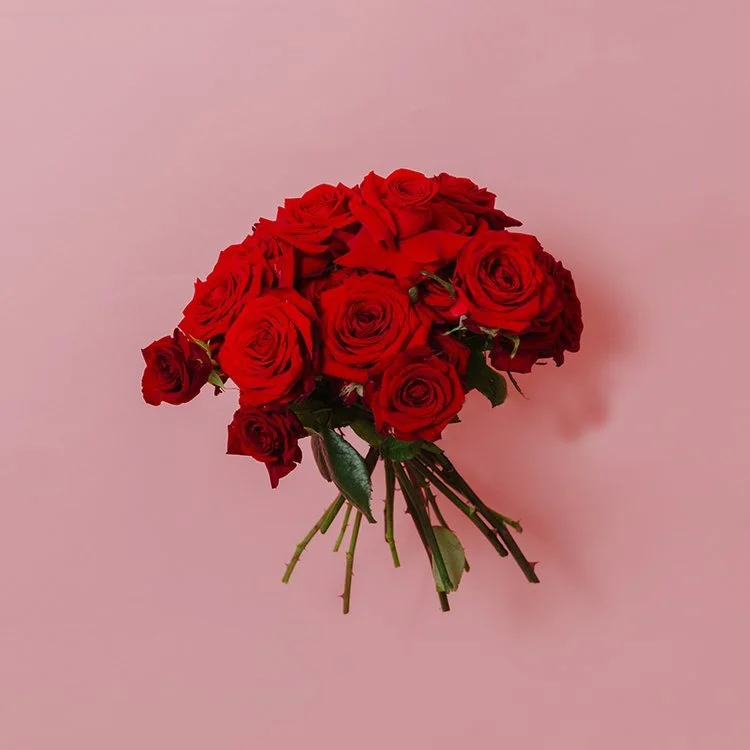Flower Symbolism
The symbolism of flowers has been recognised for centuries in many countries throughout Europe and Asia. They even played a large role in William Shakespeare’s works. From mythologies, folklore, sonnets, to plays of the ancient Greeks, Romans, Egyptians, and Chinese, flowers have peppered our entire history with symbolism as a means of communication and story telling —and for good reason too.
Whether you’re giving flowers for Mother’s Day, a friend on their birthday or to a beloved on Valentine’s Day, nearly every sentiment imaginable can be expressed with flowers. The orange blossom, for instance, means purity, and loveliness, while the red chrysanthemum means “I love you.”
Flowers developed into a complex language in the 1800’s and learning this special symbolism of flowers became a popular pastime for the Victorians. Nearly all Victorian homes had, alongside the Bible, guidebooks for deciphering this “language,” although definitions shifted depending on the source.
Following the protocol of Victorian-era etiquette, flowers were primarily used to deliver messages that couldn’t be spoken aloud. In a sort of silent dialogue, flowers could be used to answer “yes” or “no” questions. A “yes” answer came in the form of flowers handed over with the right hand; if the left hand was used, the answer was “no.”
Plants could also express aversive feelings, such as the “conceit” of pomegranate or the “bitterness” of aloe. Similarly, if given a rose declaring “devotion” or an apple blossom showing “preference,” one might return to the suitor a yellow carnation to express “disdain.”
How flowers were presented and in what condition were important. If the flowers were given upside down, then the idea being conveyed was the opposite of what was traditionally meant. How the ribbon was tied said something, too: Tied to the left, the flowers’ symbolism applied to the giver, whereas tied to the right, the sentiment was in reference to the recipient. And, of course, a wilted bouquet delivered an obvious message!
More examples of plants and their associated human qualities during the Victorian era include bluebells and kindness, peonies and bashfulness, rosemary and remembrance, and tulips and passion. The meanings and traditions associated with flowers have certainly changed over time, and different cultures assign varying ideas to the same species, but the fascination with “perfumed words” persists just the same.
Flowers provided an incredibly nuanced form of communication. Some plants, including roses, poppies, and lilies, could express a wide range of emotions based on their colour alone.
Take, for instance, all of the different meanings attributed to variously coloured carnations: Pink meant “I’ll never forget you”; red said “my heart aches for you”; purple conveyed capriciousness; white was for the “the sweet and lovely”; and yellow expressed romantic rejection.
Likewise, a white violet meant “innocence,” while a purple violet said that the bouquet giver’s “thoughts were occupied with love.” A red rose was used to openly express feelings of love, while a red tulip was a confession of love. The calla lily was interpreted to mean “magnificent beauty,” and a clover said “think of me.”
Unsurprisingly, the colour of the rose plays just a big of a role role when portraying thoughts and hidden meanings. Red roses symbolise love and desire, but roses come in a variety of colours and each has their own meaning.
White rose: purity, innocence, reverence, a new beginning, a fresh start.
Red rose: love, I love you
Deep, dark crimson rose: mourning, loss
Pink rose: grace, happiness, gentleness
Yellow rose: jealousy, infidelity
Orange rose: desire and enthusiasm
Lavender rose: love at first sight
Coral rose: friendship, modesty, sympathy
My personal favourite when working as a florist is the Tulip flower, mainly due to the beautiful and soft natural forms it takes, but also because it never stops growing, even after being cut, so each bouquet with Tulips is always different.
I also love that the flower is synonymous with a time of year focussed on fresh starts and new beginnings, a philosophy. that really resonates with my design style.
Want to Learn More about how to Communicate Using Flowers?
Book your place on any one of my Flower Workshops and find out all about the dense and complex art of communicating using the best of what nature has to offer.
Follow @ForestandtheFlowers on Instagram for exclusive updates on my recent projects.














